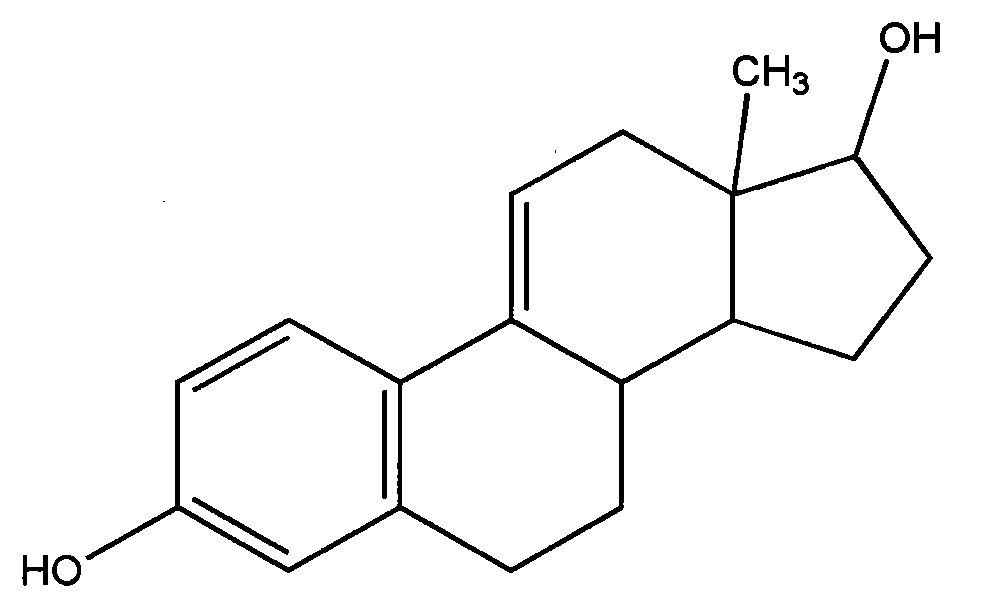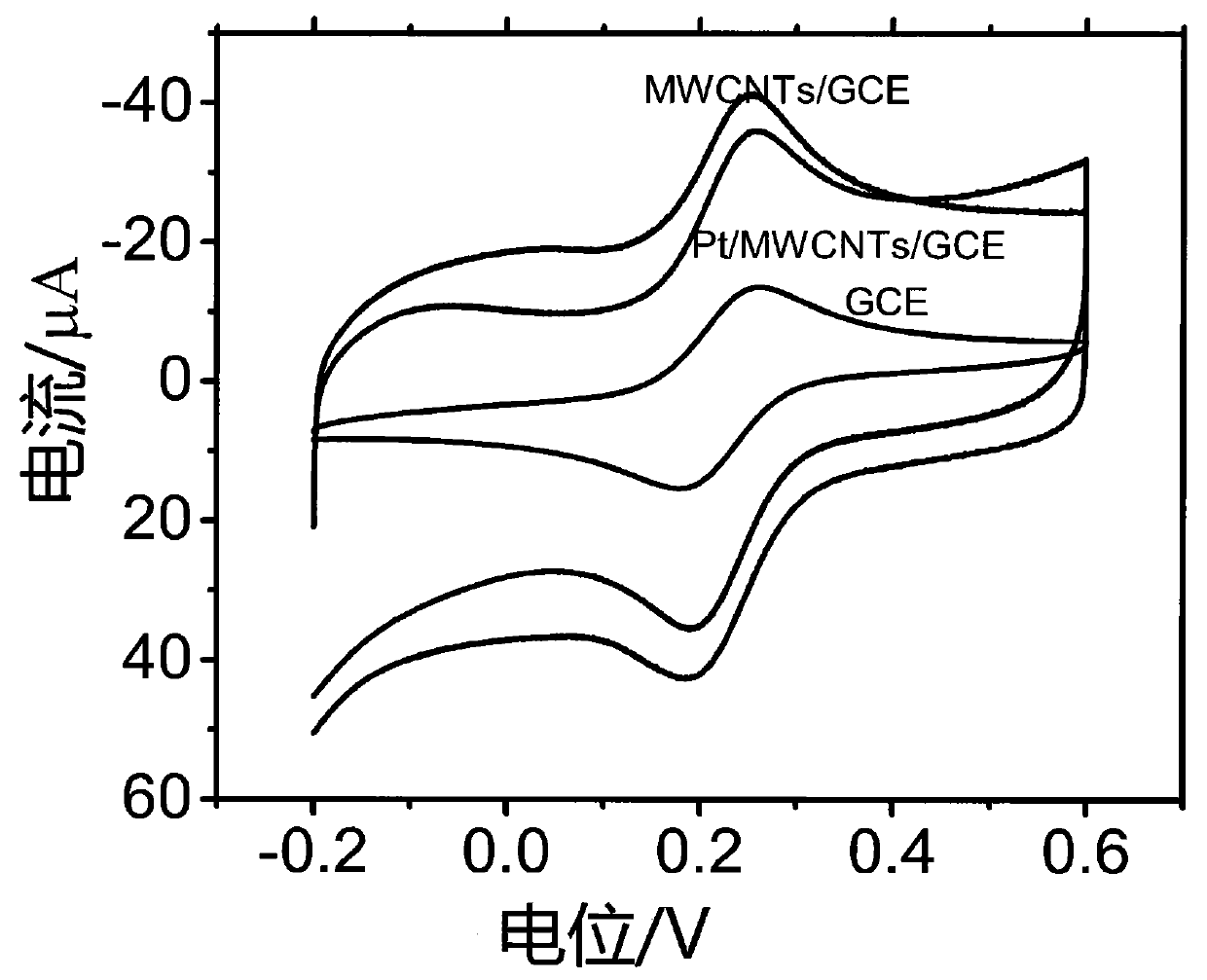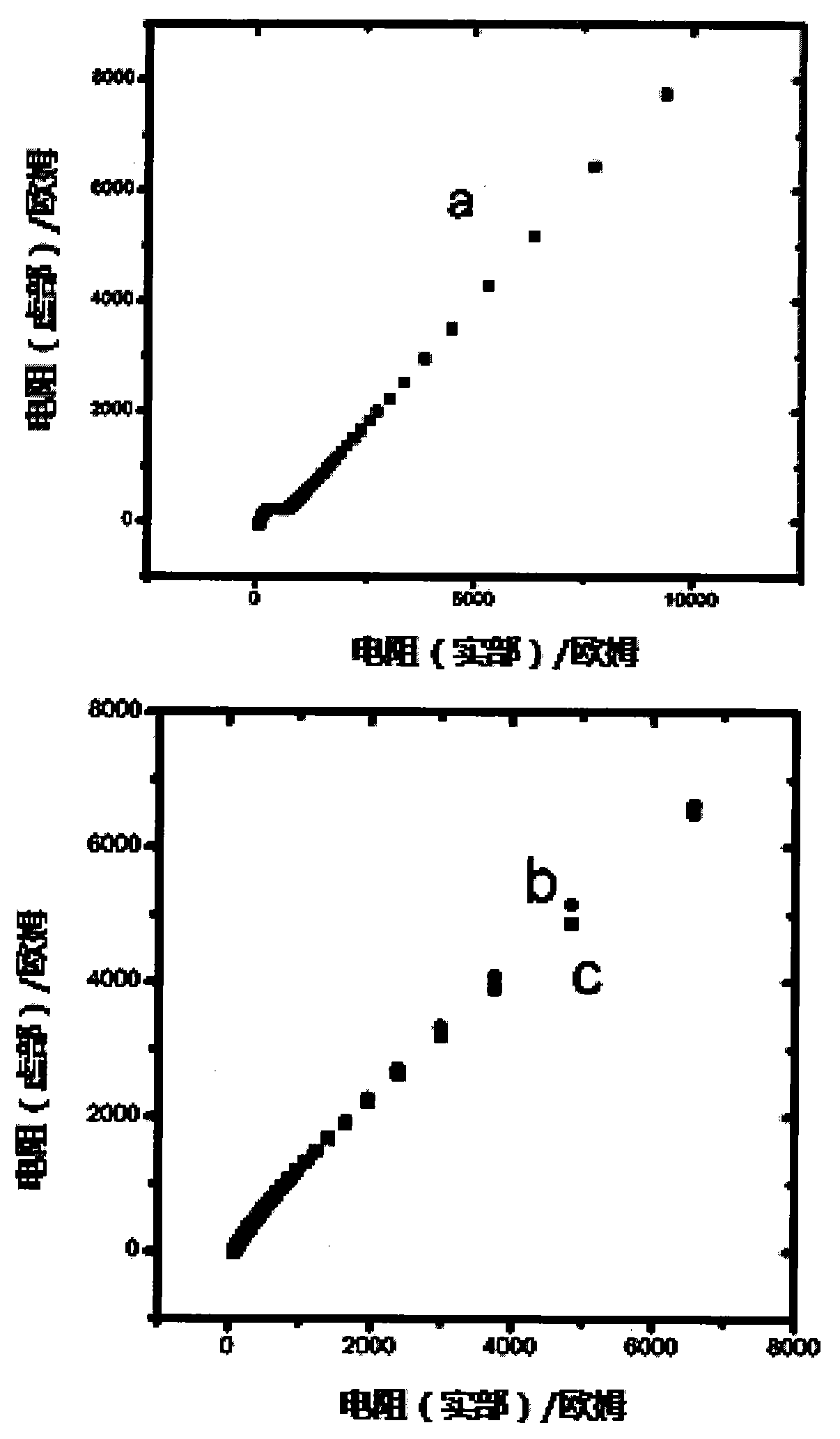Method for manufacturing nano platinum and multiwalled carbon nanotube modified glassy carbon electrode and method for detecting estradiol by utilizing glassy carbon electrode
A technology of multi-walled carbon nanotubes and glassy carbon electrodes, which is applied in the field of glassy carbon electrodes and the detection of estradiol, can solve the problems of difficulty in popularizing grassroots units, expensive instruments, complicated pretreatment, etc., and achieve good electrochemical stability , good application potential, improve the effect of electrochemical response signal
- Summary
- Abstract
- Description
- Claims
- Application Information
AI Technical Summary
Problems solved by technology
Method used
Image
Examples
Embodiment 1
[0043] Multi-walled carbon nanotubes (MWCNTs) were sonicated in 1:1 concentrated sulfuric acid and concentrated nitric acid for 4 hours, the black suspension was filtered, washed with water until neutral, and dried in an oven at 60°C. Then 2 mg of acidified multi-walled carbon nanotubes (MWCNTs) were dispersed in 1 mL of ethylene glycol aqueous solution (the ratio of ethylene glycol to water was 1:1), and sonicated until uniformly dispersed.
[0044] The bare glassy carbon electrode was polished on 0.05 μm alumina powder, and then sonicated in absolute ethanol and water for 1 min sequentially. Rinse with water, then dry with nitrogen. 4 μL of multi-walled carbon nanotube solution (2 mg L -1 ) was drip-coated on the surface of the glassy carbon electrode and dried under infrared light. Afterwards, rinse the electrode surface with water to remove loosely adsorbed MWCNTs and dust, and place the electrode in 1 mmol L -1 Chloroplatinic acid (H 2 PtCl 6 ) aqueous solution, cons...
Embodiment 2
[0046] Multi-walled carbon nanotubes (MWCNTs) were sonicated in 1:1 concentrated sulfuric acid and concentrated nitric acid for 4.5 h, and 10 μL of MWCNTs solution (2 mg L -1 ) is drop-coated on the surface of the glassy carbon electrode, and all the other processes are the same as in Example 1.
Embodiment 3
[0048] Multi-walled carbon nanotubes (MWCNTs) were sonicated in 1:1 concentrated sulfuric acid and concentrated nitric acid for 5 h, and 12 μL of MWCNTs solution (2 mg L -1 ) is drop-coated on the surface of the glassy carbon electrode, and all the other processes are the same as in Example 1. In addition to the above embodiments, the following experiments were carried out on various electrodes:
[0049] To gain insight into the role of each layer of modified material in the electrode response, 1 mmol L -1 Potassium ferricyanide (K 3 Fe(CN) 6 ) (including 0.1mol L -1 KCl supporting electrolyte) solution was used as a probe to study its electrochemical response signals on different electrodes. Such as figure 2 As shown, the cyclic voltammogram overlay compares the bare electrode (GCE), multi-walled carbon nanotube-modified electrode (MWCNTs / GCE), nano-platinum and multi-walled carbon nanotube-modified and glassy carbon electrode (Pt / MWCNTs / GCE) Response to potassium ferr...
PUM
 Login to View More
Login to View More Abstract
Description
Claims
Application Information
 Login to View More
Login to View More - R&D
- Intellectual Property
- Life Sciences
- Materials
- Tech Scout
- Unparalleled Data Quality
- Higher Quality Content
- 60% Fewer Hallucinations
Browse by: Latest US Patents, China's latest patents, Technical Efficacy Thesaurus, Application Domain, Technology Topic, Popular Technical Reports.
© 2025 PatSnap. All rights reserved.Legal|Privacy policy|Modern Slavery Act Transparency Statement|Sitemap|About US| Contact US: help@patsnap.com



